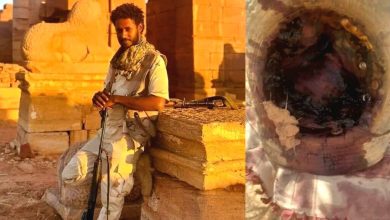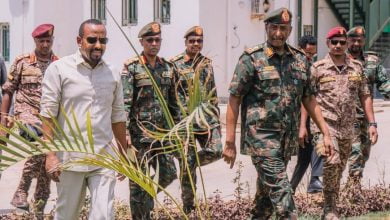Destruction of Infrastructure in the Sudanese Capital: The Show Still Continues

Al-Gadarif – almohagig – Telal Ismail
It has become evident that the infrastructure in the Sudanese capital, Khartoum, is one of the main targets of the Rapid Support Militia’s operations since the start of the war in mid-April last year, unlike other violations against civilians committed by the Rapid Support Militia.
Such infrastructure destruction operations focused on the bridges linking the three capital cities to each other after the Sudanese army left its military barracks, shifting from a position of defender to attacker.
Last Monday, the Sudanese army announced that the Rapid Support militia had destroyed part of the Halfaya Bridge linking the cities of Khartoum North and North Omdurman.
The army said in a statement shared by Almohagig: “In continuation of its systematic targeting of the country’s infrastructure and capabilities, the Dagalo terrorist militia destroyed part of the Halfaya Bridge on the eastern side, causing damage to concrete structures.”
It continued: “It is noteworthy that the militia has made a habit of attempting to destroy infrastructure and vital installations to cover up its failure to achieve its malicious goals, believing that this would prevent the armed forces from performing their duty to cleanse the nation of their filth.”
Destruction of the Refinery
On December 24, the army accused the Rapid Support Militia of “destroying what remained of the Jaili oil refinery and its warehouses” north of the capital, Khartoum.
The army said in a statement: “In continuation of its approach to destroying the country’s capabilities and its systematic sabotage of vital facilities, the rebel militia targeted for the second time this month the Jaili refinery in Khartoum Bahri, where it destroyed what remained of the refinery and the warehouses attached to it.”
Adding: “We condemn this criminal behaviour, which proves that this militia is waging war against the Sudanese people and their national capabilities,” calling for the necessity of classifying the Rapid Support Militia as a terrorist organisation by international and regional organisations.
The statement stated that the “Rapid Support Militia” “partially destroyed some of the refinery’s facilities on December 6.”
The Khartoum Oil Refinery is located 70 kilometres north of Khartoum and is linked by pipelines to production areas in the southwest of the country and export ports on the Red Sea.
Burning of the Sahélo-Saharienne Tower
On the ninth day of last January, the army also accused the militia of setting fire to the Sahélo-Saharienne Bank tower in Khartoum, which led to its complete burning.
The tower is one of the main landmarks in the centre of the capital, Khartoum. It includes the headquarters of several private and public companies, as well as the Sahélo-Saharienne Bank, a Sudanese-Libyan bank.
Since last October, massive destruction operations have affected buildings belonging to companies, offices and private institutions in central Khartoum.
The destruction included 28 commercial bank branches, along with parts of the Central Bank of Sudan building, the destruction of 19 bank offices, and the burning of large buildings and complexes such as the Al-Fayhaa Tower, the Solidarity Tower, Afraa Mall, the National Bank of Egypt, the Police House in Burri, the headquarters of the Ministry of Justice, and a number of presidencies of the judicial system, and other buildings and complexes.
On September 17, the army accused the Rapid Support militia of “continuing to sabotage and destroy public facilities and infrastructure in the country,” noting that it had burned the Nile Petroleum Company tower in Mugrin Al-Nilein.
Last November, the Sudanese army announced the destruction of the Rapid Support Militia of the vital Shambat Bridge linking Omdurman and Khartoum Bahri.
Army spokesman Brigadier General Nabil Abdullah said: “The Rapid Support militia, as part of its project, to destroy the country’s capabilities and infrastructure, and as a result of the army’s progress in the field, especially in the Omdurman axis, destroyed the Shambat Bridge linking the cities of Omdurman and Bahri, and considered the move a new added crime.” “For its record towards the nation and the citizen,” according to the statement.
The Sudanese Armed Forces also accused the “Rapid Support Militia” of destroying the Jabal Awliya Bridge, south of Khartoum, through artillery shelling at dawn on Saturday, November 18.
Stating: “In continuation of its project to destroy the country and sabotage its infrastructure, artillery shelling by the terrorist rebel militia on our positions in Jabal Awlia caused the destruction of the Jabal Awlia Reservoir Bridge.”
The destruction of infrastructure in the capital, Khartoum, coincides with looting and looting operations that affected banks, strategic goods stores, and gas stations, without issuing official estimates of the extent of material losses since the outbreak of the war.





